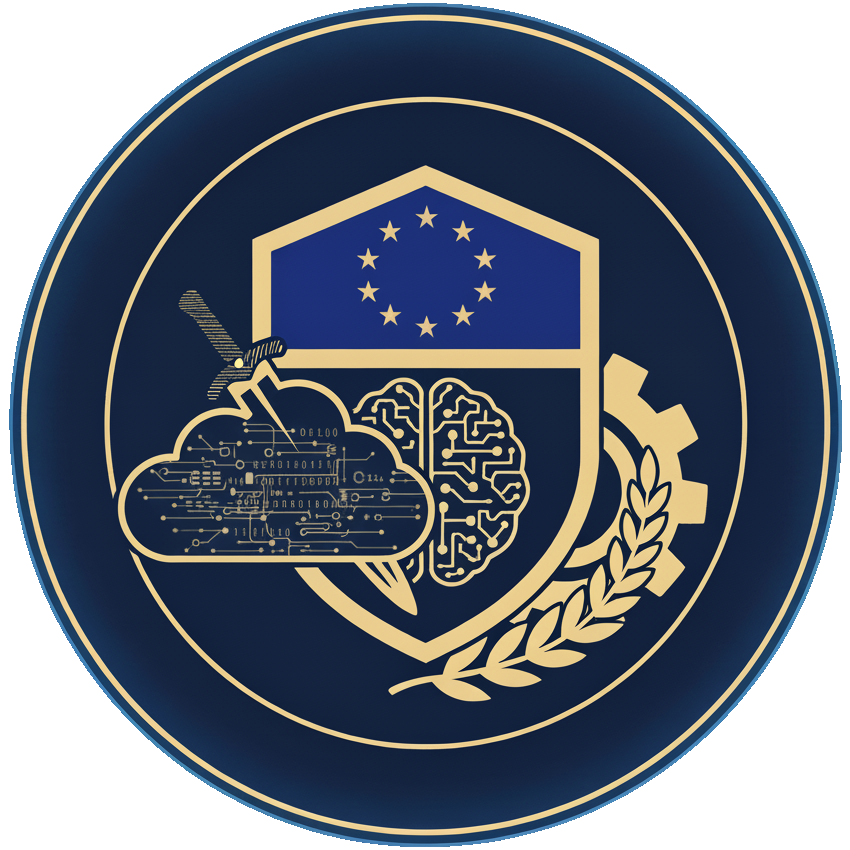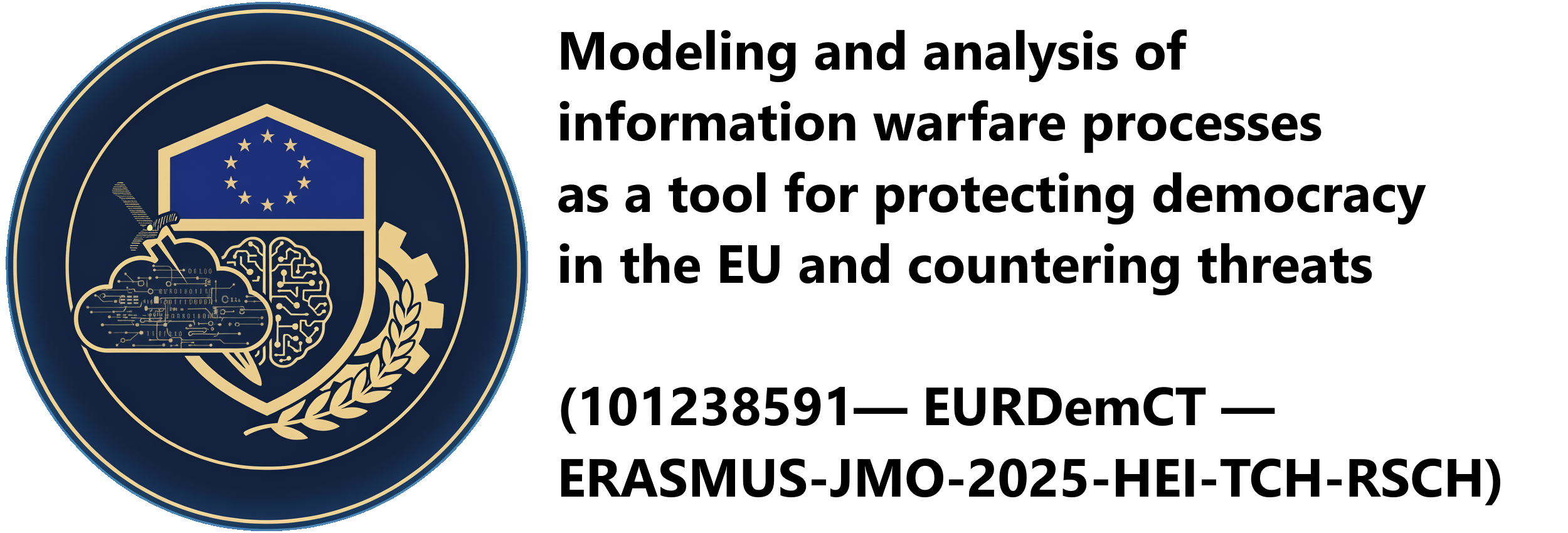Our Location
St. 2, Seminarska Str.,
Ostroh, Rivne Region,
Ukraine, 35800
● 30 h. lectures
● 20 h. seminars
● 100 h. self-learning tasks
Mastering the principles of using mathematical and computer methods in information warfare tasks. Obtaining the knowledge and skills necessary to combat information attacks successfully. The ultimate goal of this course is to gain and develop knowledge of a comprehensive system that uses software tools to assess the dynamics of internal conflict using the information warfare paradigm.
Anatolii Nikitin, Bohdan Krasiuk, Alla Atamanenko, Ivan Shyshkin, Kateryna Yakunina
Svajonė Bekešienė, Prof. (Gen. Jonas Zemaitis Military Academy of Lithuania) and Yaroslav Chabaniuk, Prof. (Lublin University of Technology, Poland)
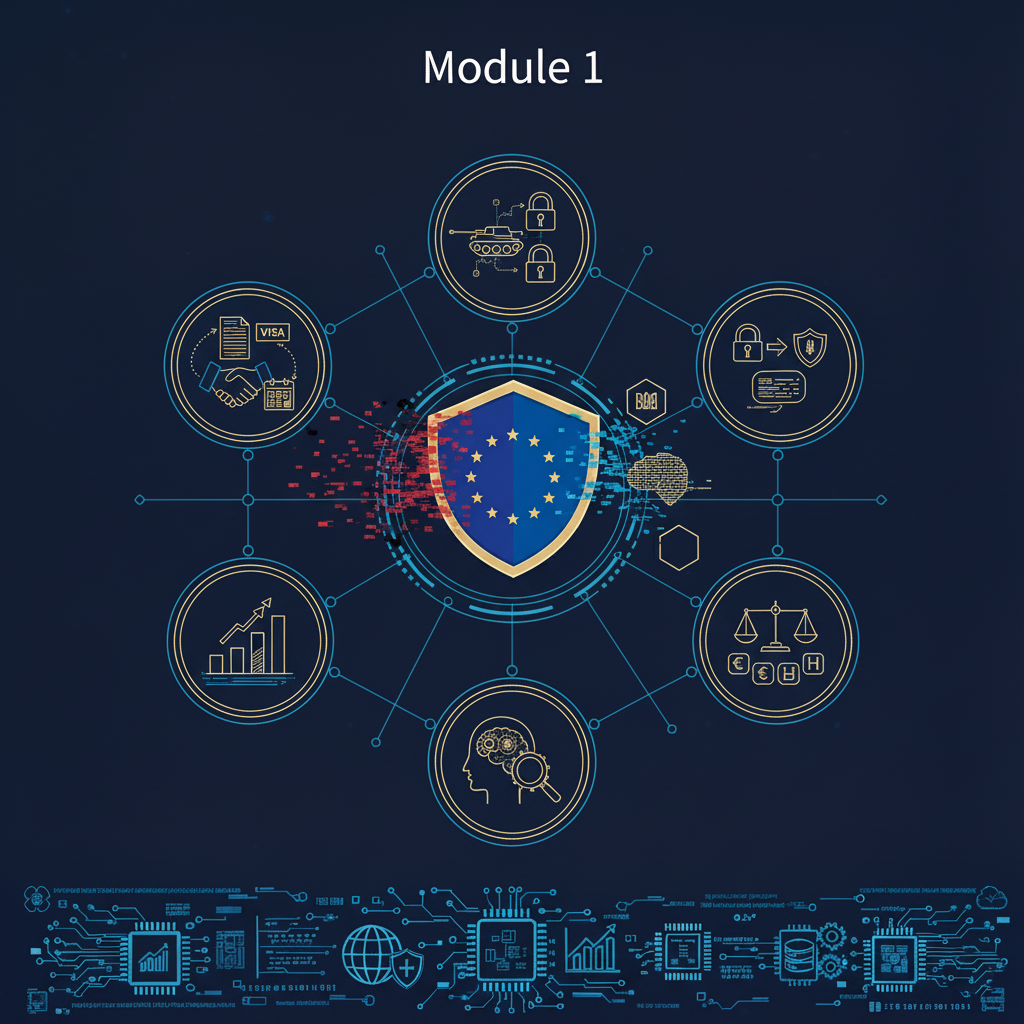
Module 1:
Lecture 1: European Integration and Ukraine’s Path to the EU
Historical Context of EU Enlargement and Ukraine’s European Aspirations. Key Milestones: Association Agreement, Visa Liberalization, and EU Candidate Status. Challenges and Opportunities of Ukraine’s Accession Process. The Impact of War on Ukraine’s EU Integration.
Lecture 2: EU Security Policy and Ukraine’s Role in the European Defense Architecture
The EU’s Common Security and Defense Policy (CSDP). Hybrid Threats and Cybersecurity: Lessons from Ukraine’s Experience. The Role of Ukraine in Strengthening European Security
Lecture 3: Economic Challenges and Opportunities in EU-Ukraine Relations
Trade and Economic Integration under the Deep and Comprehensive Free Trade Area (DCFTA). The Role of EU Financial and Humanitarian Aid in Ukraine’s Recovery. Reconstruction Strategies and Investment Opportunities in Post-War Ukraine.
Lecture 4: Democracy, Rule of Law, and Governance Reforms in Ukraine
The EU’s Copenhagen Criteria and Ukraine’s Progress in Reforms. Anti-Corruption Measures and Judicial Reforms: Achievements and Challenges. Decentralization and Local Governance in Ukraine: Lessons from EU Practices. The Role of Civil Society in Promoting Democratic Values.
Lecture 5: The EU’s Approach to Hybrid Warfare and Ukraine’s Experience in Countering Disinformation
The EU’s Strategic Communication and Hybrid Threat Response. Russian Disinformation and Influence Operations in Ukraine and the EU. Ukraine’s Experience in Resisting Information Warfare: Successes and Challenges. Policy Recommendations for Strengthening EU-Ukraine Cooperation in the Information Space
Module 2:
Lecture 1: Introduction to Mathematical Modelling
Fundamentals of Mathematical Models: Objectives and Approaches. A Review of Applied Problems in Information Warfare. Python as a Modelling Tool: Overview of Basic Libraries (NumPy, SciPy, Matplotlib).
Lecture 2: Fundamentals of Dynamical Systems Modelling
Differential Equations as the Basis of Models: Lotka-Volterra, Gompertz. Examples of Models: Information Warfare, Epidemic Spread. Implementation of Dynamical Systems Models in Python.
Lecture 3: Stochastic Processes and Random Perturbations
Introduction to Probability Theory and Stochastic Systems. Markov Processes, Stochastic Differential Equations. Solving Stochastic Systems in Python Using NumPy.
Lecture 4: Asymptotic Analysis of Stochastic Systems
Averaging, Diffusion Approximation, Poisson Approximation. Examples of Diffusion Models. Optimization of calculations for long-term simulations.
Lecture 5: Optimization of calculations in Python
Profiling and optimization of code. Using NumPy for efficient work with large data sets. Vectorization of calculations and parallel processing.
Lecture 6: Visualization of modelling results
Data visualization using Matplotlib and Plotly. Building dynamic graphs for visualization of stochastic processes. Analysis and interpretation of results.
Lecture 7: Modelling of information warfare
Analysis of information warfare models. Implementation of the Lotka-Volterra algorithm for several types of information threats. Visualization of the dynamics of information flow competition.
Lecture 8: Development of a decision support system
SPPR architecture for modelling information conflicts. Interaction of frontend and backend (ReactJS + Python). API for calculations and dynamic parameter tuning.
Lecture 9: Using modern libraries for modelling
Overview of Scipy and SimPy for system simulation. TensorFlow and PyTorch for modelling complex dynamic systems. Comparison of ready-made solutions with self-written algorithms.
Lecture 10: Practical aspects and real examples
Statistical data analysis and modelling based on real samples. Testing the information warfare model for specific scenarios. Optimization of models for interactive work.
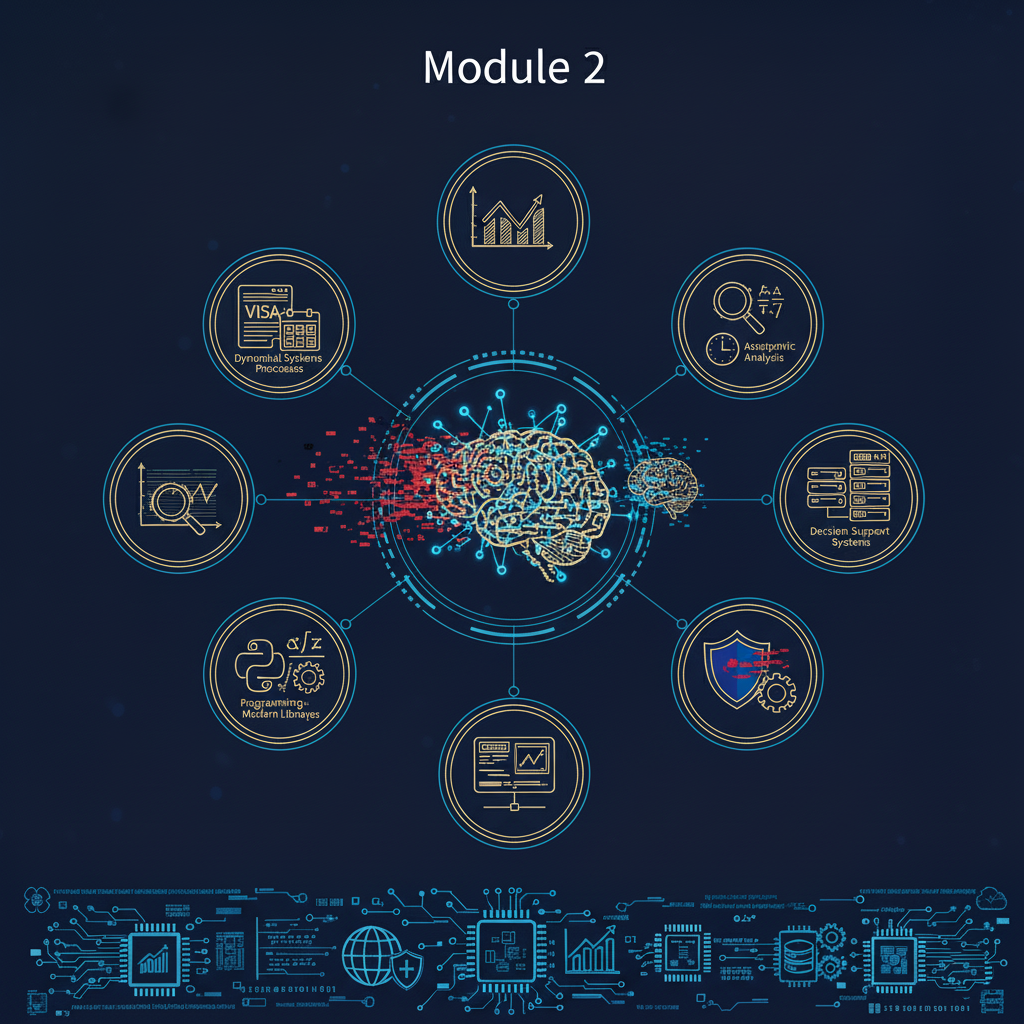
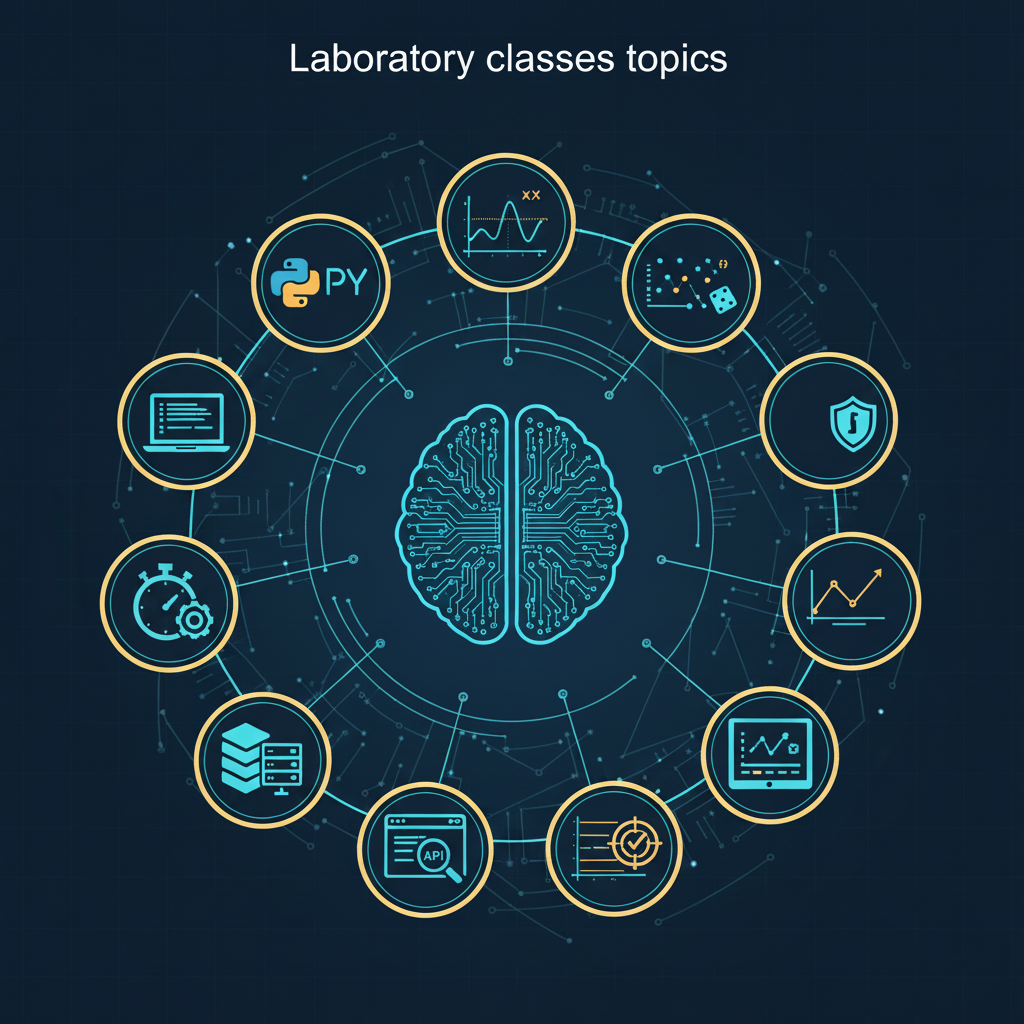
Laboratory classes topics:
Lab 1: Introduction to Python for Mathematical Modelling
Setting up the Python environment (Jupyter Notebook, PyCharm). Working with the NumPy and Matplotlib libraries. Writing basic programs for solving algebraic problems.
Lab 2: Solving differential equations
Implementing Lotka-Volterra models in Python. Using the SciPy library to solve ordinary differential equations. Visualizing the resulting trajectories.
Lab 3: Modelling random processes
Generating random numbers and processes in Python. Implementing a simple Markov process. Simulating stochastic differential equations using the NumPy library.
Lab 4: Building and testing information warfare models
Implementing a competition algorithm for two information flows. Testing the model for different information dissemination parameters. Analyzing the influence of “external” and “internal” channels.
Lab 5: Optimization of calculations
Using profiling (cProfile module) to analyze program performance. Vectorization of calculations with NumPy. Optimization of loops and large matrix operations.
Lab 6: Using approximation schemes
Implementation of averaging schemes for dynamic systems. Diffusion approximation and its software implementation. Analysis of approximation accuracy depending on parameters.
Lab 7: Building a software interface for modelling
Using Flask to create a backend. Configuring the API for calculations. Developing a web application for the visualisation of modelling results.
Lab 8: Working with big data sets
Processing and analysing big data sets (social media popularity, user behaviour). Using Pandas libraries to work with tabular data. Integrating statistical data into an information warfare model.
Lab 9: Model Testing and Validation
Model testing techniques: using control data sets. Comparing models with theoretical results. Tweaking parameters to improve prediction accuracy.
Lab 10: Creating an interactive report
Using Jupyter Notebook to integrate code, graphs, and text. Building interactive graphs with Plotly. Automatically generating reports with modelling results.
